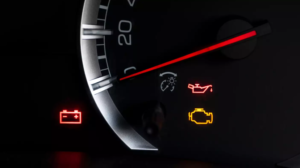Brits Warned About One Dashboard Light That Means You Should ‘Stop Driving Immediately’
Modern vehicles are equipped with a multitude of sensors and warning lights designed to alert drivers to potential issues. While some indicators signal minor problems, others demand immediate attention to ensure safety. One such critical warning is the brake system alert—a red circle with an exclamation mark or the word “BRAKE.” Ignoring this light can lead to severe consequences, making it imperative for drivers to understand its significance and respond appropriately.
Understanding the Brake System Warning Light
The brake system warning light is a crucial indicator of your vehicle’s braking health. When this red symbol illuminates on your dashboard, it typically signifies one of the following issues:
-
Low Brake Fluid Level: Brake fluid is essential for the proper functioning of your braking system. A drop in its level can compromise braking efficiency, increasing the risk of accidents.
-
Worn Brake Pads: As brake pads wear down over time, sensors detect their reduced thickness and trigger the warning light. Driving with worn pads can damage other components, leading to costly repairs.
-
Brake System Malfunction: This could involve issues with the master cylinder, brake lines, or other critical components. Such malfunctions can severely impair your vehicle’s ability to stop effectively.
-
Handbrake Engaged: Sometimes, the light indicates that the handbrake is still engaged. However, if releasing the handbrake doesn’t extinguish the light, another issue is likely present.
Immediate Steps to Take
Upon noticing the brake system warning light, adhere to the following steps:
-
Safely Pull Over: Find a secure location to stop your vehicle. Continuing to drive with a compromised braking system is hazardous.
-
Check the Handbrake: Ensure the handbrake is fully released. If the light remains on, proceed to the next step.
-
Inspect Brake Fluid Level: Refer to your vehicle’s manual to locate the brake fluid reservoir. If the fluid is below the recommended level, it may indicate a leak or excessive brake pad wear.
-
Avoid Driving Further: Do not resume driving. Instead, contact a professional mechanic or a breakdown service to assess and rectify the issue.
The Dangers of Ignoring the Warning
Disregarding the brake system warning light can have dire consequences:
-
Brake Failure: A malfunctioning brake system can lead to complete brake failure, making it impossible to stop the vehicle and increasing the likelihood of collisions.
-
Legal Implications: Driving a vehicle known to have defective brakes is illegal and can result in fines, penalty points, or more severe legal actions if an accident occurs.
-
Increased Repair Costs: What might begin as a minor issue can escalate into significant damage if left unaddressed, leading to more extensive and expensive repairs.
Preventative Measures
To minimize the risk of encountering brake system issues:
-
Regular Maintenance: Adhere to your vehicle manufacturer’s recommended service intervals. Regular inspections can identify and address potential problems before they become critical.
-
Monitor Brake Performance: Pay attention to changes in braking efficiency, unusual noises, or vibrations when applying the brakes. These can be early indicators of underlying issues.
-
Educate Yourself on Dashboard Indicators: Familiarize yourself with your vehicle’s dashboard warning lights. Understanding their meanings ensures you can respond promptly and appropriately to any alerts.
Conclusion
The brake system warning light is not an indicator to be taken lightly. It serves as a vital alert to potential issues that could jeopardize your safety and that of other road users. By responding immediately and seeking professional assistance, you can ensure your vehicle remains safe and roadworthy. Remember, when it comes to braking systems, proactive maintenance and prompt attention to warnings are essential to prevent accidents and costly repairs.


